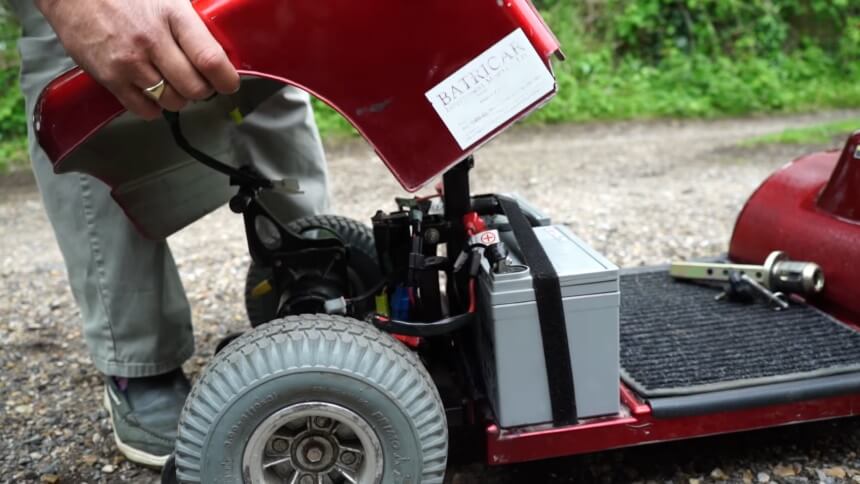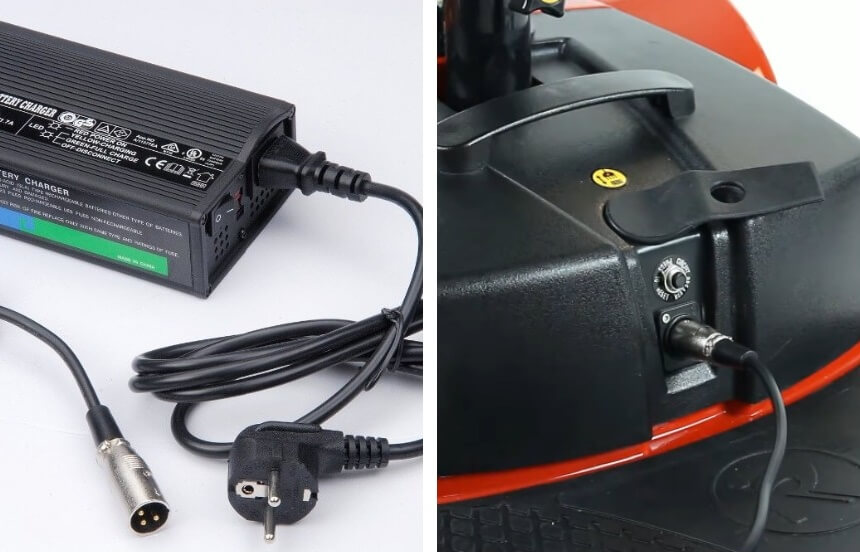One of the best gifts you can give to elderly and disabled people is a mobility scooter. It eases their movement impediment and assists them in having a normal-like life as they would be able to go to places they would love to go. However, it should be noted that scooters are just like other mechanical and electronic devices; they are very delicate and can break down at any time. But with scooters, the most common problem is with the charger and the battery.
So, in this article, we will discuss mobility scooter charging problems and battery problems. We will look at how to troubleshoot these issues, the ideal way of charging scooter batteries, and tips to ensure that your scooter battery lasts long.

The user manual for your mobile scooter includes a beep code chart, which you can refer to for help. Otherwise, you can Google your mobility scooter model and the number of beeps you’re hearing to know the section that’s malfunctioning.
Generally, to sort out your mobile scooter Trusted Source The impact of mobility scooters on their users. As older people start to have difficulty in walking many choose to use a mobility scooter to help them move around. Benefitting from improved design, mobility scooters are becoming an increasingly popular mobility device and are a common sight on many streets. However, very little is known about their usage or their impact in terms of either quality of life or functional health. Whilst mobility scooters may help to improve the quality of life of their users, it is also possible that the sedentary nature of their usage results in a decline of physical functionality and therefore reduced capabilities. Before any substantial research can be carried out it is crucial to understand the importance of a mobility scooter on the lives of the people that use them and to review the initial research published on the effect of scooter use on physical health. This paper is a state-of-the-art review. It describes the current research knowledge on mobility scooters, shows where gaps in knowledge exist and where future research needs to focus. www.ncbi.nlm.nih.gov problem, understanding how its beep codes work is important. The beep codes on mobility scooters are designed in a way that the scooter sounds a number of times to react to a specific fault. This way, you can figure out what’s wrong so you can fix it yourself or give precise information to a professional when you call for help.
To charge your scooter battery, you will plug the charger into the scooter and the power outlet. If the battery pack indicates a red light, it means it’s charging, and when the light turns green, it means it’s fully charged.
However, if things don’t go smoothly like this, for example, if the red light remains after the scooter battery charging time if the battery power does not increase while charging, if your outdoor mobile scooter stops while coming home, or any other abnormalities, it means that there’s either a charging or battery problem.
The last thing you will want is to be stranded because your mobile electric wheelchair is faulty, so to help, here is a troubleshooting procedure to ensure that you’re always covered.
A charging issue can only be caused by a faulty charger. To troubleshoot it, do the following:
After all, this, if the charger fails to work, you’d have to replace it with another charger. You must ensure that the charger is of the same brand to make sure it fits.
There are basically two types of scooter batteries – sealed lead-acid and gel cell. No matter the battery type you have attached to your scooter, damage or malfunctioning is inevitable at some stage. In most cases, it’s either because the battery is worn out or it has been damaged by water. If this occurs, do the following.
The battery will start malfunctioning or stop working after it has been used for a long time. This is because, just like other mechanical and electronic equipment, it has a certain lifespan. Also, the battery cannot be charged normally if it has been subjected to a hard impact from an external force, resulting in a fault or loosening the connector. In cases like this, it’s advisable that you replace it or take your scooter to an expert in a repair store for help.
Water and all sorts of liquid are detrimental to the functionality of your scooter battery as it’s quite possible for the battery to short circuit if this happens. To stop this problem, you mustn’t ride your scooter in the rain or swampy areas.
However, if your scooter comes in contact with water by accident, take the following measures:

Charging your battery properly is essential as that’s one way to maximize the lifetime of your battery.
After the charger has been plugged into the power output and the scooter battery, the indicator light will turn red, and when it’s fully charged, it will become green. To properly charge your battery, you must plug it in for the required number of hours as instructed by the manufacturer (check your manual to find out). If it’s not charged up to the required hours, it won’t function optimally.
Below is a step-by-step process to charge your battery properly:
To enjoy your scooter to the maximum for a long time, there are Dos and Don’ts. Below are some of the tips for fulfilling these.
To be on the safer side of things, it is best that you get a reliable mobile electric scooter that won’t give you a charging or battery problem. According to professionals, the Compact Mid-Wheel Drive Power Chair and the Porto Mobility Ranger D09 Wheelchair are the best on the market as they are lightweight, strong, and sturdy. Also, they have reliable chargers and batteries that provide extra ability to cover more distance.
Non-charging issues are a common problem with electric scooters. In fact, in most cases, it’s a first problem you’ll encounter with your scooter. It needs to be fixed appropriately. If not, it may result in other defects.
To fix your mobility scooter charging problems, you can either troubleshoot it yourself or call a professional to help. In this post, the procedures to follow in troubleshooting it has been explained. In addition, how to properly charge your battery and tips to maximize your scooter battery life have also been discussed. However, if you want to DIY, ensure you’re with a professional guide to prevent adding to the fault it already has.